Lighting-control systems evolve with technology

Photo courtesy of Signify
The capabilities of lighting-control systems have evolved beyond adjusting output and turning lights on and off. Today’s systems can adjust light-source color, including shades of white light, and generate data by measuring and monitoring. They also offer a digital pathway to new “internet of things”-enabled services and are part of many building automation systems (BASs).
The advantages of lighting-control systems are well-documented. By reducing lighting time, intensity or zoning, lighting controls reduce both demand and energy consumption. According to a Lawrence Berkeley National Laboratory study, lighting-control strategies produce 24-38 percent energy savings, which reduces building operation costs.
In fact, the majority of state commercial-building energy codes require a wide range of lighting controls in new construction. In existing construction, the controllability of light-emitting diode (LED) lighting results in an ideal pairing with controls, combining to minimize energy costs, according to the Lighting Controls Association (LCA), Rosslyn, Va.
Special challenges
Hospitals pose special challenges to suppliers of lighting-control systems, ranging from stringent code-compliance requirements to a wide variety of lighting types, depending on the room usage. There also is the challenge of determining how lighting-control upgrades impact a hospital’s business strategy. Lighting-control systems must be able to adapt to evolving technological needs.
The newest systems can help health care facility managers meet these challenges and keep up with the ever-evolving needs of patients and staff. Among new lighting-control systems available to hospitals, the SmartCast Intelligence Platform from Cree Inc., Durham, N.C., provides LED lighting, automated control, data-enabled analytics and an integrated building solution.
“The platform turns data from the LED lighting system into actionable insights that solve major issues faced by facility managers,” says Tom Hinds, director of intelligent lighting at Cree. “This includes reducing the lighting energy spend by more than 70 percent and identifying unoccupied rooms for nurses and doctors.”
Another innovation is the LumaWatt Pro wireless connected lighting system from Eaton, Peachtree City, Ga., which helps hospitals maximize energy savings by incorporating a distributed network of smart LED lighting fixtures with wireless sensing capabilities. The system captures real-time data on lighting energy performance, space utilization, asset tracking and building system integration.
“The Enlighted Space application, powered by data collected via LumaWatt Pro sensors, allows facility managers to understand how their space is being used, improve productivity and optimize their actual building usage by ensuring that rooms are used to their maximum output,” says Jaiganesh Balasubramanian, product manager of lighting solutions — systems at Eaton.
Eaton also offers a distributed low-voltage power (DLVP) system that combines power, LED lighting and controls into one energy code-compliant solution. DLVP is suitable for health care facilities that have repeated spaces and matching configurations such as doctors’ offices, urgent care and rehabilitation centers.
Color control
LEDs allow facility managers to adjust lighting color and correlated color temperature (CCT). For example, tunable white LED products — featuring separately dimming arrays of warm- and cool-white LEDs — allow users to adjust a light source’s CCT. Other colors may be added to enhance the available color spectrum and ensure good color rendering.
Two other approaches are dim-to-warm (LED products that dim to a warm white similar to incandescent dimming) and full-color tuning (separately dimmable red, green and blue LEDs plus amber or white, and other potential colors).
With tunable white-lighting technology, the lighting system can be programmed to mimic a 24-hour cycle in an indoor space, according to Rahul Shira, senior marketing manager of lighting controls, software and internet of things systems, Signify (formerly Philips Lighting), Somerset, N.J.
“The system also allows users to create multiple lighting scenes where each scene sets the mood of the space — for example, a more relaxed scene with lower intensity levels and a softer lighting color can be activated when friends and family are visiting a patient,” Shira says. “Similarly, when a doctor is examining a patient, a focused lighting scene can trigger higher intensity with cooler lighting color.”
Matt Ochs, director of product management, Lutron Electronics Inc., Coopersburg, Pa., says that tunable white lighting-control technologies allow for adjustment of both intensity and color temperature. This enables lighting protocols to automatically mimic the progression of daylight over the course of a day, helping to support circadian lighting design.
“In its continuing effort to improve the patient experience, the Medical Behavioral Unit at Children’s Hospital of Philadelphia is using Lutron, tunable white solutions as it pioneers the implementation of circadian lighting in health care settings,” Ochs notes. “As research into circadian lighting progresses, Lutron’s Ketra fixtures will offer the ability to provide full-spectrum control for high-quality, tunable white as well as full-saturated color to create spaces that are aesthetically interesting and help improve mood.”
Hubbell Control Solutions, Greenville, S.C., recently introduced the NX SimpleTouch, which feeds its NX Distributed Intelligence system, offering dimming presets and easy-to-understand navigation. Similar to a smartphone screen with large virtual buttons that feature text, it is able to present multiple screens of presets, as well as multiple screens for direct, dimming control of each lighting group.
As part of this system, Hubbell Control Solutions offers luminaires with SpectraSync color temperature tuning technology. “With the NX SimpleTouch, presets such as ‘relax’ can tune the white light CCT down to a comfortable and warm 2,700K,” says Joe Bokelman, market development manager. “A preset such as ‘exam’ can raise the CCT to 6,500K, which activates more of the blue end of the spectrum, making the red color of blood, infections and other key recovery factors easier to see.”
Thanks to these technological advances, lighting-control equipment often is connected to BASs. This makes sense when facility managers want to integrate other systems such as security, fire alarm, HVAC and lighting into one integrated system. It allows them to control disparate systems as one, making their jobs easier. “Many of Eaton’s lighting-control systems are BACnet-compatible, which allows for its connected lighting systems to be integrated with BAS and smart building platforms,” says Balasubramanian.
Ochs of Lutron Electronics says that lighting control can provide data that inform better building management, contribute to measurable energy savings and reduce risk for the facility team. “It also is important to be cognizant of how quickly technology changes, and to choose a lighting-control solution that is scalable and flexible, able to easily adapt and expand over time, and able to easily integrate with other building systems via open standards such as BACnet or [application programming interfaces],” he notes.
It makes sense to manage lighting through BAS when facility managers want to maintain one building schedule for both HVAC and lighting, and have one main dashboard for monitoring and control, according to Bokelman. “However, for smaller private offices, classrooms and patient rooms in health care facilities, it does not make sense because occupants require localized control in these areas by having access to controls that are within reach.”
Internet of things
This BAS connection is made possible by the increasing role that the internet of things plays in hospital lighting-control systems. Internet of things-enabled lighting-control systems help building managers assess energy consumption, gather insights from occupancy data and increase control over facility management. “Hospitals also can optimize safety,” Hinds says. “For example, they can use occupancy data to see if someone is in an unauthorized area and take action.”
Lighting is already a ubiquitous presence in health care facilities, says Shira of Signify. By connecting these light points to networks, software and data, lighting becomes a digital pathway to new internet of things-enabled services. “Connected lighting systems have the power and potential to transform such environments as hospital settings, where it is not only more efficient but can support people’s health and well-being.”
Shira adds that data collected from internet of things devices can reveal key insights such as “which spaces are occupancy hot spots in the building and what are the occupancy-flow patterns in those spaces.” That information can then be used to trigger automatic responses such as “turn down the lights and cooling on the ninth floor” or “brighten the lights because a patient will arrive in 10 minutes for a procedure.” These actions can help improve the efficiency of building operations.
As internet of things solutions continue to evolve, many hospital information technology departments remain cautious about deploying cloud-based control systems in their buildings given vulnerability concerns, according to Luke Connery, director of business development at Energy Source, a division of Revolution Lighting Technologies, Providence, R.I. “Most lighting-control systems installed in hospitals do have wireless access, but to mitigate safety and security concerns, the facilities will generally run these systems on independent, local networks that can be controlled via phone-, tablet- and PC-based apps.”
The future of the internet of things points to connecting BAS to transform buildings from physical assets to revenue generators, according to Steven T. Roe, director of product market for lighting controls, Acuity Brands Lighting, Atlanta. “In the past, Acuity foresaw the impact that LED lighting and digital controls would have on the health care field and recognized that the future goes beyond conventional lighting and controls,” he states.
For a health care facility, this means investing in communication and beaconing technology to connect those digital lights (provided by retrofitting or outfitting a facility with energy-saving LED luminaires embedded with sensors) through a digital network, Roe explains. This allows access to large amounts of sensor data, and making that data available both in mobile-device, software-development kits and application programming interfaces in the cloud.
To bring this concept to reality, Acuity Brands Lighting has developed Atrius, an embedded internet of things platform that collects data from the building’s digital sensory network covering indoor and adjacent outdoor space in a grid pattern. “Applications for health care facilities include navigation, wayfinding and asset tracking,” according to Greg Carter, vice president of connected building software at Acuity.
Automation and energy
Bokelman says that lighting control systems will feature more automated interaction between the occupant and the environment in the future. Such systems will run predictive analytics to adjust their own settings and schedule based on data collected over time, which will provide incremental savings over a much longer period.
From an energy-efficiency, retrofit or upgrade perspective, Energy Source foresees more lighting systems that utilize Bluetooth mesh technology, according to Connery. This is because of the current Wi-Fi spectrum crunch problem where existing consumer-focused Wi-Fi networks cannot handle the rapid data communication needs of the private sector. “That said, locally networked lighting groups remain the de facto choice for hospital lighting retrofit projects as they allow for lighting connectivity while removing any Wi-Fi issue as well as the risk of hacker infiltration.”
Balasubramanian believes that lighting-control systems are in a unique position to improve building operations. “Lighting has dense distribution throughout health care facilities,” he says. “All fixtures have power and there is no added cost of installation for an internet of things infrastructure. By enabling sensors in the light fixtures with location beaconing and detection technology, hospitals are rapidly becoming smarter, efficient and more productive.”
Neal Lorenzi is a freelance writer based in Mundelein, Ill.

Gentle balance
The Connected LED lighting system is designed to better support patients and medical staff by simulating the benefits of natural light. Signify
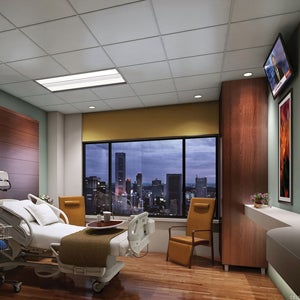
Double duty
Designed with both the patient’s and medical professional’s needs in mind, MediMode strikes a balance between visual comfort and high-quality illumination for critical tasks. Hubbell Control Solutions

Simple source
The rNet lighting-control platform is simple, flexible and scalable to meet the needs of health care facilities. Energy Source, a division of Revolution Lighting Technologies
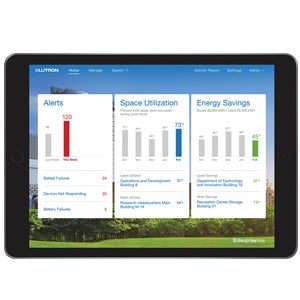
Insider’s view
Solutions such as Quantum and Enterprise Vue easily integrate with other building systems via open standards such as BACnet or application programming interfaces. Lutron Electronics Inc.
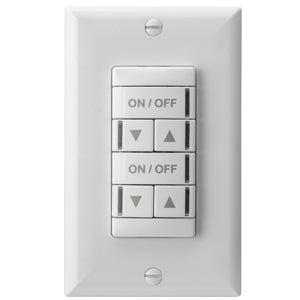
In the air
The nLight AIR rPODB wireless, battery-powered wall switch communicates with other nLight AIR devices via radio frequency. Acuity Brands Lighting
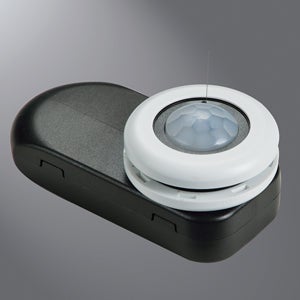
Smart choice
LumaWatt Pro wireless connected lighting system helps hospitals maximize potential energy savings by incorporating a distributed network of smart LED lighting fixtures with wireless sensing capabilities. Eaton
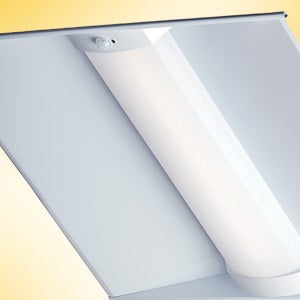
Better lighting
The ZR Series LED Troffer with SmartCast provides automated control, data-enabled analytics and an integrated building solution. Cree Inc.




